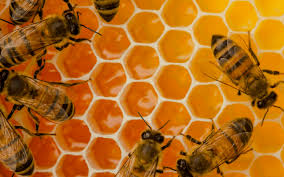Beekeeping is a rewarding hobby that combines outdoor activity, scientific observation, and the satisfaction of harvesting honey. However, success hinges on having the right equipment. This guide synthesizes insights from industry experts, beekeeping forums, and product reviews to outline the top equipment for hobbyists, ensuring safety, efficiency, and enjoyment in your apiary journey.
Table of Contents
1. Hive Components
Hive Bodies
The hive is the cornerstone of beekeeping. Beginners should opt for mainstream designs like the Langstroth or National hive, which are widely supported and compatible with local beekeeping communities 210. Cedar hives are durable and traditional, while polystyrene hives offer superior insulation for harsh winters 10. Starter kits like the Mann Lake Complete Hive Kit simplify setup with pre-assembled components, including brood boxes and supers 4.
Frames and Foundation
Frames provide structural support for honeycomb. Plastic foundations (e.g., Pierco frames) are durable and easy to clean, while wax-coated foundations encourage natural comb-building 810. Foundationless frames, though requiring more skill, allow bees to produce pure wax—ideal for sustainability-focused hobbyists 10.
Queen Excluders
These prevent the queen from laying eggs in honey supers, ensuring brood-free harvests. Metal excluders are preferred over plastic for durability and ease of cleaning 10.
Feeders
During nectar shortages, feeders provide supplemental nutrition. Top feeders (placed inside the hive) reduce robbing, while entrance feeders are simple to refill 26.
2. Protective Gear
Bee Suits and Veils
A full bee suit with an integrated veil offers maximum protection. Ventilated suits (e.g., USKEEPERS 3-Layer Bee Suit) balance comfort and safety, while jackets paired with jeans suffice for calm colonies 49. Veils should have fine mesh to prevent stings around the face 1.
Gloves
Nitrile gloves provide dexterity for handling frames, while leather gloves offer thicker protection. Experienced beekeepers often transition to thinner gloves as confidence grows 109.
Boots
High boots with sealed ankles prevent bees from crawling up pants. Waterproof options are ideal for muddy apiaries 4.
3. Hive Management Tools
Hive Tool
This multipurpose metal tool pries apart propolis-sealed boxes, scrapes wax, and removes frames. The Bee Built Ultimate Hive Tool combines a comb knife and pry bar for versatility 110.
Smoker
Smokers calm bees by masking alarm pheromones. Stainless steel models with heat shields (e.g., New Bee Hive Smoker) are durable and efficient. Fuel options include burlap, pine needles, or commercial pellets 19.
Bee Brush
A soft-bristled brush gently removes bees from frames during inspections. Note that bees dislike this tool—use sparingly 12.
Queen Catcher
This spring-loaded cage safely isolates the queen during hive manipulations, preventing accidental harm 29.
4. Educational Resources
Books and Manuals
Beginner guides like Beekeeping for Dummies or The Beekeeper’s Handbook demystify colony management. Advanced topics (e.g., swarm control, disease prevention) are covered in specialized texts 12.
Online Communities
Forums like Flow Forum and local beekeeping associations provide mentorship and troubleshooting advice. Many offer hands-on workshops 910.
5. Optional but Valuable Tools
Nucleus (Nuc) Boxes
Polystyrene nuc boxes are lightweight and insulated, ideal for swarm capture, queen rearing, or overwintering small colonies 10.
Honey Extractors
While expensive, radial extractors streamline honey harvesting. Beginners can rent these through local clubs 10.
Varroa Mite Treatments
Products like Apivar Strips or oxalic acid vaporizers combat parasitic mites, a leading cause of colony collapse 610.
Budget Considerations and Pro Tips
- Start with Two Hives: Managing two colonies increases success rates—use one to support the other during swarms or disease outbreaks 10.
- Prioritize Quality: Cheap equipment often fails; mid-range cedar hives or stainless steel tools offer better longevity 10.
- Maintenance: Clean smokers regularly to prevent residue buildup, and store hive tools in washing soda to sterilize them 910.
Here are 10 frequently asked questions (FAQs) about top beekeeping equipment for hobbyists:
🐝 Top Beekeeping Equipment for Hobbyists – FAQs
- What basic equipment do I need to start beekeeping as a hobby?
Most hobbyist beekeepers start with a hive (Langstroth is most common), protective gear (like a bee suit, gloves, and veil), a smoker, and a hive tool. - What type of hive is best for beginners?
The Langstroth hive is the most popular and recommended for beginners due to its modular design, ease of use, and availability of parts. - Why do I need a smoker and how does it work?
A smoker calms the bees by masking their alarm pheromones, making it easier to inspect the hive without causing aggression. - Is a full bee suit necessary, or can I just use a veil and gloves?
For beginners, a full bee suit is recommended for maximum protection until you’re more confident around bees. - What is a hive tool and why is it essential?
A hive tool is used to pry apart hive boxes, remove frames, and scrape off wax and propolis—it’s basically the beekeeper’s multi-tool. - Should I buy new or used beekeeping equipment?
New equipment is safer for beginners to avoid disease contamination. If buying used, ensure it’s properly cleaned and inspected. - How many hives should a beginner start with?
Most hobbyists start with 2 hives—it allows for comparison and provides a backup if one colony struggles. - Do I need to feed my bees or can they forage naturally?
Depending on the season and forage availability, you may need to supplement with sugar syrup or pollen patties, especially in early spring or late fall. - What tools help with honey extraction for hobbyists?
A basic setup includes an uncapping knife or fork, a manual extractor, and a strainer or filter for bottling honey. - Where should I buy beekeeping equipment as a hobbyist?
Reputable beekeeping suppliers (like Mann Lake, Dadant, or local beekeeping stores) offer beginner kits and quality gear.

